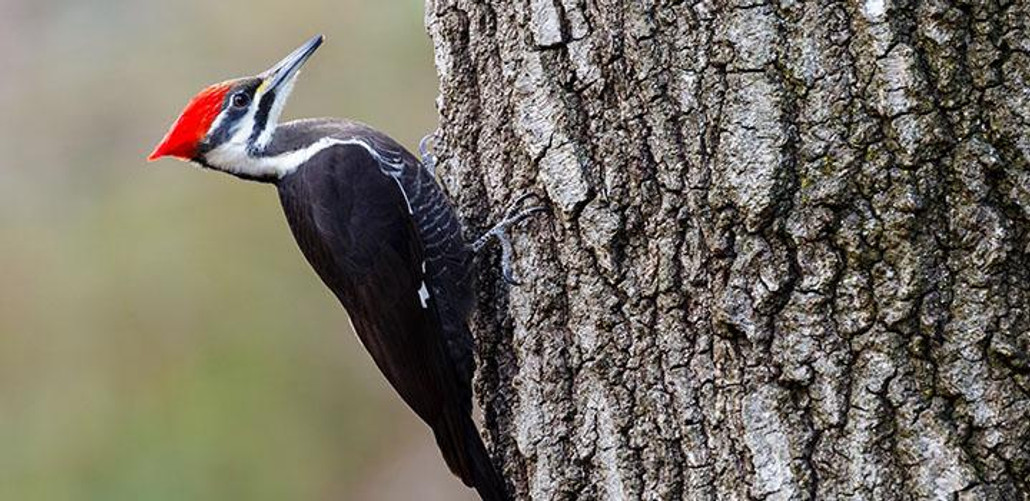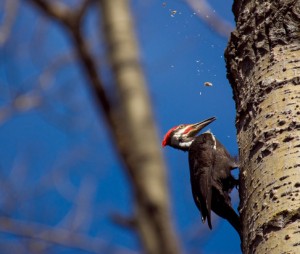
Preventing Woodpecker Damage
Posted by Grange Co-op on 1st Aug 2015
Woodpeckers can be annoying with their hammering and drumming on houses. They can also damage structures and trees by drilling holes in wood siding and eaves, tree trunks and limbs. Most such damage is done by flickers, but sapsuckers, acorn and downy woodpeckers can also cause problems on occasion.
All woodpeckers are migratory non-game birds protected by the Federal Migratory Bird Treaty Act. A property owner needs a federal permit to use any lethal control, and violators are subject to penalties and fines.
Why and Where WoodPeckers Hammer:
 Knowing why woodpeckers hammer can make a difference in the solution chosen. They hammer to attract mates, to establish and defend territory, to excavate nesting and roosting sites, and to find insects, store acorns, or lap sap and the insects attracted to it.
Knowing why woodpeckers hammer can make a difference in the solution chosen. They hammer to attract mates, to establish and defend territory, to excavate nesting and roosting sites, and to find insects, store acorns, or lap sap and the insects attracted to it.
Drumming is a form of woodpecker communication. It usually happens during the spring mating season and usually does not do any damage, though, admittedly, it can be annoying at 5am to be awakened by a woodpecker outside your bedroom window! Favorite drumming materials are those that produce the loudest sound: wood shingles, cedar or redwood siding, metal and plastic gutters, light posts and TV antennas. Visual and sound scare tactics work best in such situations.
If insects are the attraction, the birds have done the homeowner a service. Fix the insect infestation problem and the woodpeckers will go away.
Acorn woodpeckers drill holes to store acorns for the winter, often in late summer and early fall. They traditionally use old dead snags for this purpose and return to the same tree year after year, generation after generation. If humans remove their “granary tree” and replace it with a house, guess what the birds will use as their new granary? Leaving or erecting an old snag somewhere in the yard may encourage them to use that instead of the house.
Because woodpeckers also excavate holes for nesting, homeowners can encourage them to nest elsewhere by placing a nest box designed for woodpeckers/flickers on their property. A nesting woodpecker will defend its territory vigorously and keep other woodpeckers away.
Control Tactics:
Property owners have several techniques at their disposal. These include using preventive construction materials, prompt damage repair, exclusion from the area, and visual and sound scare tactics. These methods should be used right away because woodpeckers resist moving from their territory once they are established. All of these techniques require property owners to be as alert and stubborn as the birds themselves. Where woodpeckers are exceptionally persistent, visual and sound scare methods and other deterrents are most effective when used in combination.
Preventing damage is, of course, preferable to repairing it. New construction near woodpecker habitat might, for example, use brick, stone, aluminum or steel siding. Loose knots in cedar siding should be removed and replaced with wood putty. Plug exposed core plugs in reverse board-and-batten siding with wood putty or caulk.
Repair any cracks or openings that could give woodpeckers a surface to cling to. Promptly repairing large holes also discourages woodpeckers since these holes can attract them. Cover holes with aluminum flashing, tin can tops or metal sheeting and paint them to match the siding. Deaden sound producing materials by filling in the hollow spaces behind them can also discourage woodpeckers.
Remove perch sites and stretch monofilament fishing line or stainless-steel wire across landing areas to exclude these birds. Another technique for excluding them from already damaged sites is to attach light plastic or nylon netting or ¼ inch hardware cloth to the eaves. Applying sticky bird repellents to damaged structures or trees can prevent further damage also. Be aware, however, that such products may streak in warm weather.
A generally successful visual scare tactic is to place two hawk silhouette mobiles from the eaves near a damaged area. Also, attaching a 7 ½ inch diameter convex shaving mirror flat against the wall with the enlarging lens facing outward frightens woodpeckers. Windblown black plastic or holographic strips 1 ½ inches wide and 2-3 feet long, pinwheels with reflecting vanes, or aluminum pie pans also work as deterrents. Old cd’s, dangling by a string, have also been used successfully. Note: Owl effigies usually are not successful for frightening woodpeckers.
Woodpeckers can sometimes be frightened away by persistent loud noises: shouting, a radio in the window, cap pistols, pots and pans banged together, or noise makers. In orchards propane cannons are effective, particularly when moved daily.
